
Vol 29 - 2021
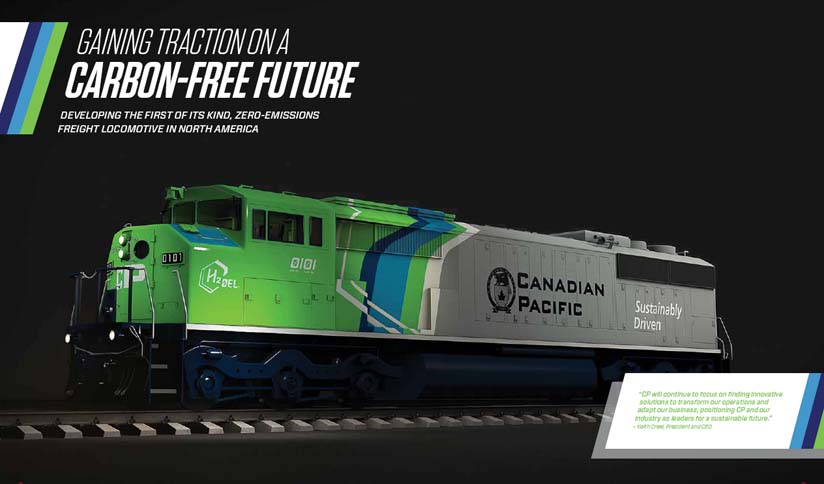
At the start of the 19th century, the commercial steam engine helped launch the Industrial Revolution. These engines of ingenuity connected
communities, moving products and people with relative ease and speed for the first time in history. With commerce and travel expanding exponentially,
the Industrial Revolution initiated humanity's greatest release of greenhouse gases (GHGs) with little consideration of their effects on our
climate.
By the 1930s, diesel-electric locomotives had become the standard. These locomotives offered more power but made little headway in terms of reducing emissions. Since then, diesel-electric locomotives have evolved with advancements to fuel efficiency, loading, and traction power. However, diesel-powered locomotives like the AC4400 in CP's fleet, remain our industry's leading cause of GHG emissions. But that's about to change.
On 18 Dec 2020 CP announced plans to develop North America's first hydrogen-powered zero-emissions freight locomotive by retrofitting a diesel-electric line-haul locomotive with hydrogen fuel cells and battery technology to power the locomotive's electric traction motors.
"The Industrial Revolution enabled a comfortable way of life, but that does not mean we can take it for granted," said Chief Engineer Kyle Mulligan. "There are more efficient, cleaner, and environmentally friendly ways of achieving the same standards and goals in life. The technology CP is working on is clear proof that a sustainable future is achievable."
Emissions from steam and diesel-electric locomotives originate from the burning of their fuel sources. Unlike the combustion model of steam and diesel-electric locomotives, hydrogen fuel cells utilize an electrochemical reaction without burning a fuel source. A combination of fuel cells and batteries replace the engine and alternator of diesel-powered locomotives to power electric traction motors.
Fuel cells have several benefits over conventional combustion-based technologies currently used in locomotives. Fuel cells can operate at higher efficiencies than combustion engines and can convert the chemical energy in the fuel directly to electrical power and have lower or zero emissions compared to combustion engines. Hydrogen fuel cells emit only water, addressing critical climate challenges as there are no carbon dioxide emissions. Plus, there are no air pollutants that produce smog and cause health problems at the point of operation.
"This technology builds on prior experience with low-emitting locomotive technologies, including biofuels, compressed natural gas, and battery-powered solutions. The first of its kind in North America, the goal is to move CP's locomotive fleet towards a more sustainable future where locomotives produce zero emissions.
This is a globally significant project that positions CP at the leading edge of decarbonizing the freight transportation sector," said Keith
Creel, President and CEO. "CP will continue to focus on finding innovative solutions to transform our operations and adapt our business,
positioning CP and our industry as leaders for a sustainable future."
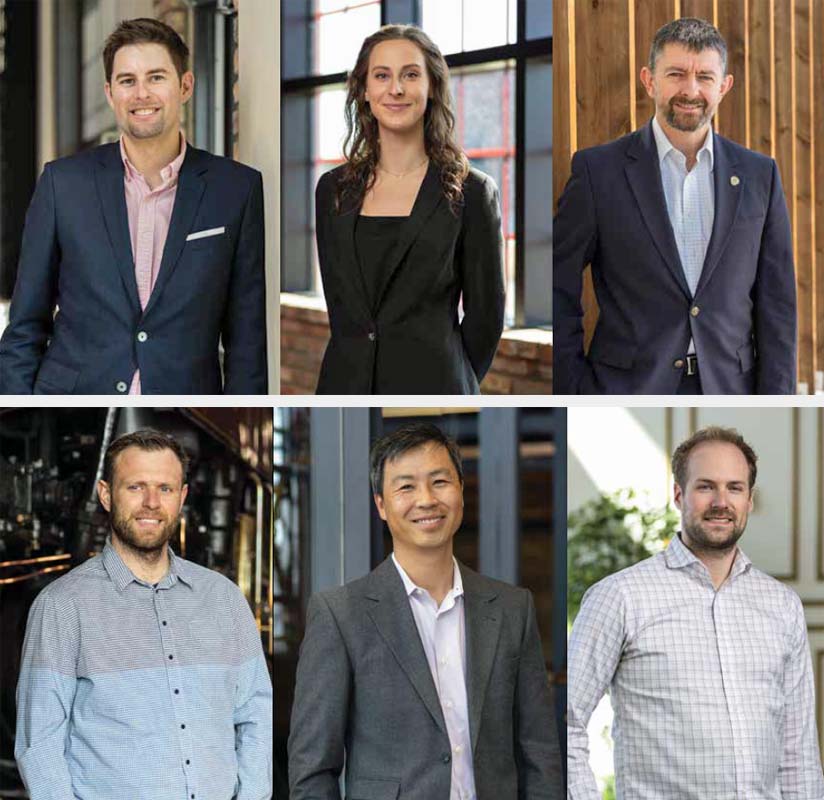
Leading this initiative is CP's Railway Technology team of six. Led by Chief Engineer Kyle Mulligan, the team includes Gary Wong Senior Project Engineer, Veronika Kowalczyk Engineer-in-Training, Milan Dubinsky Senior Power and Control Engineer, Matthew Findlay Director Locomotive Regulatory and Finance, and Cody Fischer Systems Engineer Railway Technology.
This bright and talented team is at the forefront of developing North America's first hydrogen-powered, zero-emissions, freight locomotive. A recent graduate from the University of British Columbia with a degree in mechanical engineering, Veronika Kowalczyk is passionate about sustainability and eager to take part in the development of alternative energy innovations.
"It feels unbelievable to develop this technology," said Kowalczyk. "I cannot begin to describe the excitement I feel when I think about this project and the milestones we have yet to achieve. I feel very lucky to be developing this prototype with such a talented team of people, and to be able to learn so much from them as an engineer who is just starting her career."
As Senior Project Engineer, Gary Wong is involved in all aspects of CP's Hydrogen Locomotive Project, from concept to implementation, to testing and verification. With international experience and extensive kowledge in various oil and gas technical roles, Wong is passionate about applying his expertise and knowledge and leading the Hydrogen Locomotive team to success.
"CP is a historical company, and similar to the transition from steam to diesel nearly a century ago, as an engineer, I am proud and excited to be at the forefront of new technology and play a direct role in this history-making project," said Wong.
As Senior Power and Control Engineer, Milan Dubinsky is responsible for developing and building the power and control system for the ground breaking hydrogen-powered locomotive. Dubinsky holds a master's in engineering and a Ph.D. from the University of Kosice in Slovakia, and is excited about taking part in creating a better, sustainable, future.
"We are already seeing a shift in the transportation industry away from using fossil fuel sources, towards zero-emissions sources such as electric cars or hydrogen cars. For me, it is exciting to play a part in this transformation," said Dubinsky.
Right now, the Railway Technology team is busy building the first prototype so they can begin testing early next year. Once operational, the team will conduct rail service trials and qualification testing to evaluate the technology's readiness for the freight-rail sector.
"We have to ensure that these units are compatible with our precision scheduled railroading model," said Mulligan. "Rigorous testing is required to guarantee the safety and reliability of these units for freight-rail service."
The Hydrogen Locomotive Project is an exciting step forward as we look towards de-carbonizing our operations to deliver a more sustainable future for
shareholders, customers, and communities in which we operate.
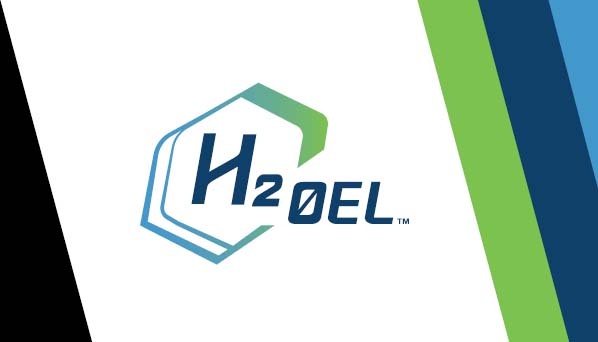
CP has long focused on energy-saving initiatives as a core component of our sustainability practices.
Since 1990, CP has improved our locomotive fuel efficiency by more than 40 percent through a variety of programs and technology deployments designed to improve fuel economy and reduce air emissions.
The hydrogen-powered locomotive currently in development was aptly named CP 0101, 0 represents the emissions produced by the locomotive, 1 represents
the atomic number for hydrogen, and 01 represents this unit being the first of its kind.
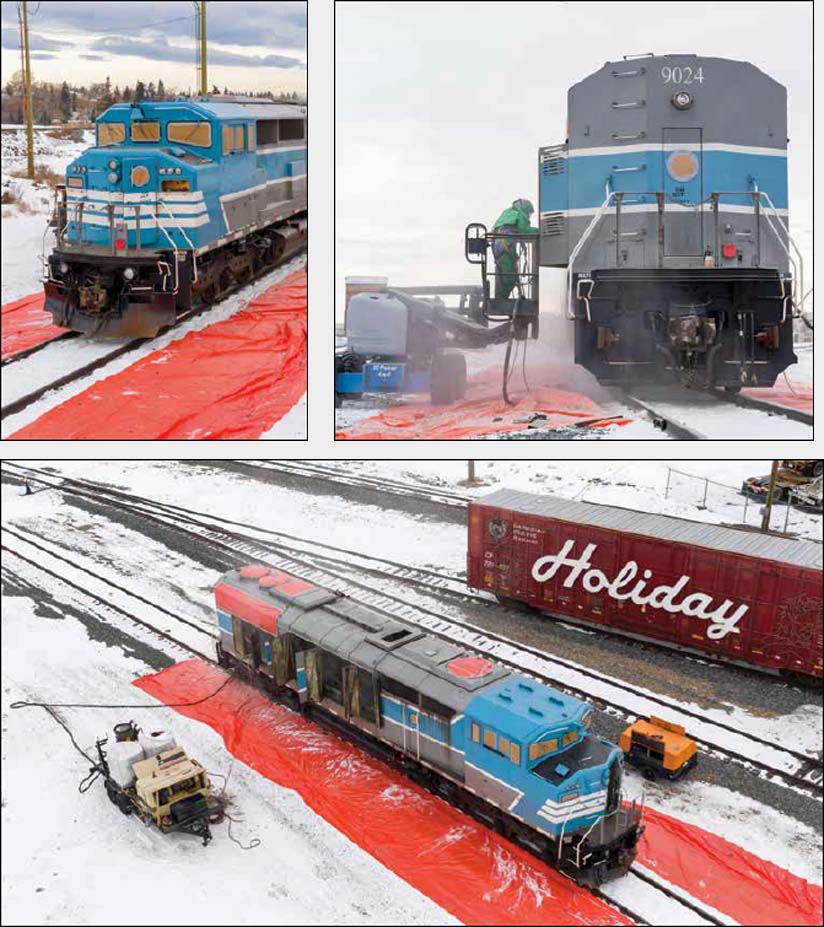
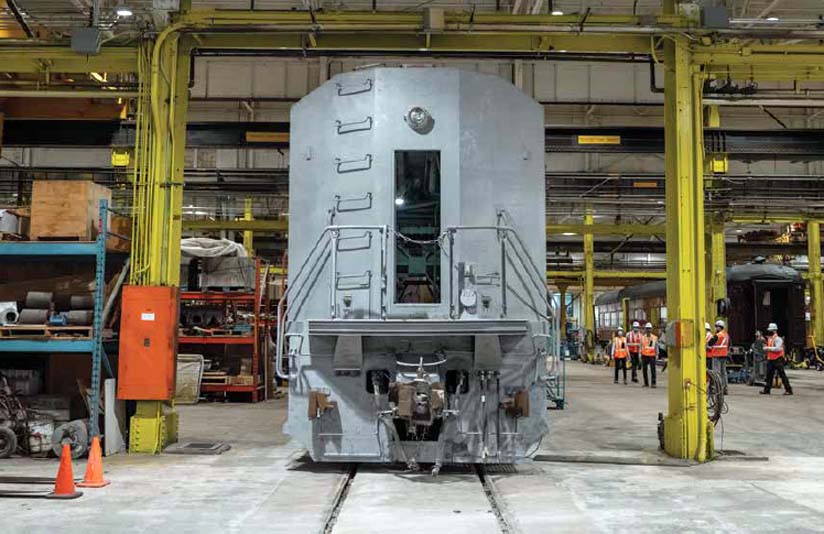
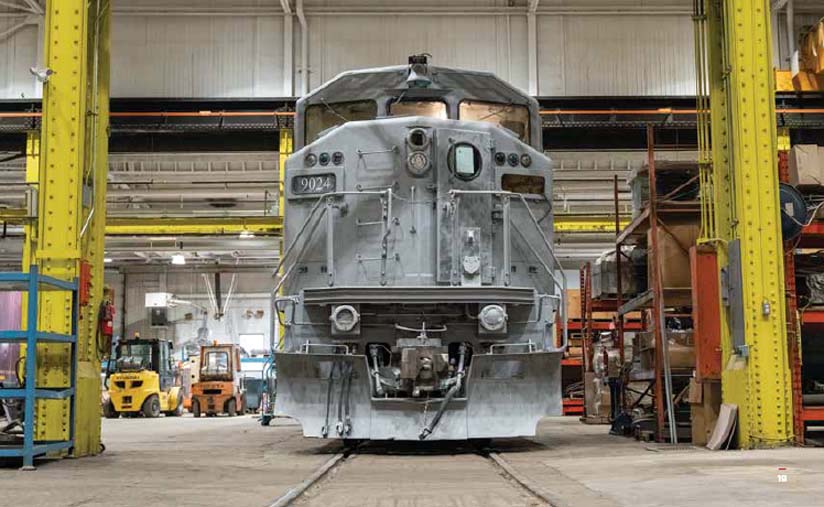
 and is reprinted here with their permission.
All photographs, logos, and trademarks are the property of the Canadian Pacific Railway Company.
and is reprinted here with their permission.
All photographs, logos, and trademarks are the property of the Canadian Pacific Railway Company.